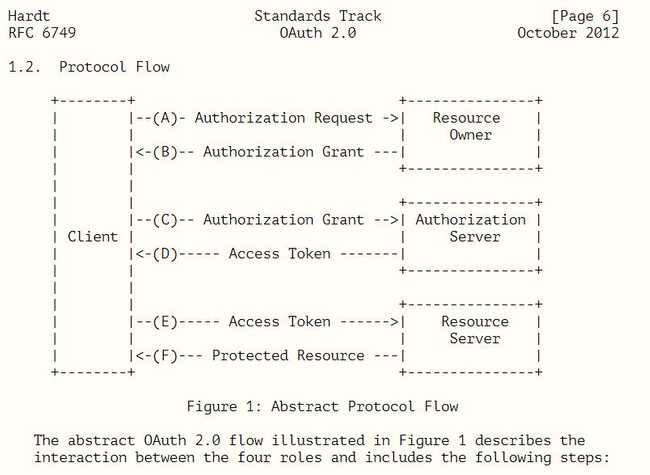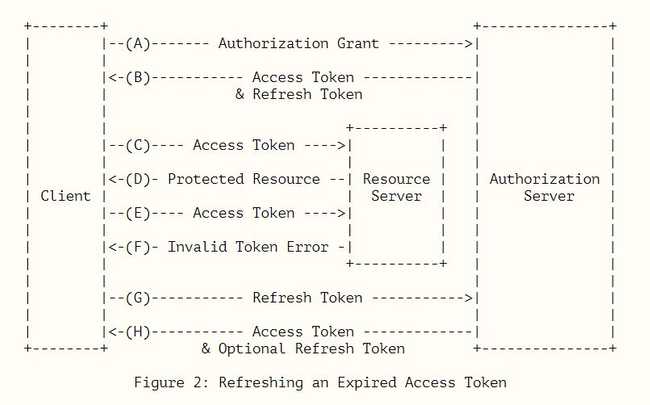왜 만들었지?
Abstract
The OAuth 2.0 authorization framework enables a third-party application to obtain limited access to an HTTP service, either on behalf of a resource owner by orchestrating an approval interaction between the resource owner and the HTTP service, or by allowing the third-party application to obtain access on its own behalf. This specification replaces and obsoletes the OAuth 1.0 protocol described in RFC 5849.
제 3자의 서비스가 다른 서비스의 사용자의 정보를 얻어오기 위함이다.
프로토콜에 참여하는 주체
oauth2 의 resource owner, resource server, client, authorization server 의 개념을 알아두자
resource owner
An entity capable of granting access to a protected resource. When the resource owner is a person, it is referred to as an end-user.
resource owner - 실제 유저라고 생각하면된다.
resource server
The server hosting the protected resources, capable of accepting and responding to protected resource requests using access tokens.
resource server - 실제 유저의 정보를 가지고 있는 서버이다.
client
An application making protected resource requests on behalf of the resource owner and with its authorization. The term "client" does not imply any particular implementation characteristics (e.g., whether the application executes on a server, a desktop, or other devices).
client - 유저의 정보를 알고싶은 제3의 서비스 라고 보면된다.
authorization server
The server issuing access tokens to the client after successfully authenticating the resource owner and obtaining authorization.
authorization server - resource server 서버에 대한 접근 token 을 다루는 서버이다. 보통 resource server 와 authorization server 가 동일한 서버인 경우가 대부분이다.
프로토콜
protocol flow
어떻게 동작하는지 감이 잘 안온다.
다행히 생활코딩에서 동영상으로 잘 만들어서 무료로 공개하였다.
- 생활코딩 WEB2 - OAuth 2.0 (https://opentutorials.org/module/3668)
시나리오
Resource Server 에 Client 등록
Client 는 Resource Server(동시에 authorization server 기능도 가지고있다고 가정하자.) 에 APP (redirect url 등)을 등록한다.
Resource Server 는 Client 에게 Client ID 와 Client Secret 을 발급한다.
주체 : 가지고있는 정보
Resource Server : Client ID, Client Secret, Callback url, Resource(E-mail,Name 등)
Client : Client ID, Client Secret, Callback url
Resource Owner :
Resource Owner 가 Resource Server 에게 허가요청
Resource Owner 는 Resource Server 에게 Client 에게 데이터를 공유해도 된다고 허락하는 과정을 거친다.
Client 는 Resource Owner 가 Resource Server 에게 request 하도록 함.
예를 들어 다음과 같은 URL을 새창을 띄워 보여줌
Resource Owner 는 Resource Server 의 인증절차(로그인)를 거침
Resource Server 는 Resource Owner 에게 Client 에게 Resource({name,E-mail})정보 제공 허용는지 확인절차를 진행
허가 후 Callback 및 Client 의 코드획득
Resource Owner 의 허가를 받은 Resource Server 는 Callback url(https://client/callback?code={code}) 에 code 정보를 담아 redirect 한다.
Callback Url 을 통해 Client 는 code 정보를 받게 된다.
Resource Server 는 Client 에게 Callback url(https://client/callback?code={code}) 정보를 전달함.
Client 는 Client ID, Client Secret, Authorization code 를 조합하여 Resource Server 에게 데이터를 전송함.
ex) https://resource.server/token?
grant_type=authorization_code
&code={code}
&redirect_uri=https://client/callback
&client_id={client_id}
&client_secret={client_secret}
주체 : 가지고있는 정보
Resource Server : Client ID, Client Secret, Callback url, Resource(E-mail,Name 등)
Client : Client ID, Client Secret, Callback url, Authorization code
Resource Owner : Authorization code
code 로 Access token 획득
조합한 정보(Authorization code, Client Id, Client Secret,redirect_uri) 를 보낸 Client 는 Resource Server 로 부터 Access token 과 Refresh Token 을 획득한다.
Authorization code 는 재사용 되지 않으므로, Resource Server, Client 두 곳 모두에서 파기된다.
Resource Server 는 Client 에게 Access token 과 Refresh Token 을 제공
Authorization code 는 파기됨.
주체 : 가지고있는 정보
Resource Server : Client ID, Client Secret, Callback url, Resource(E-mail,Name 등), Access token, Refresh Token
Client : Client ID, Client Secret, Callback url, Access token, Refresh Token
Resource Owner :
Access token & Refresh Token
추후 Client 는 Access token 을 이용하여 Resource Server 로 부터 Resource Owner 의 정보를 가져온다.
Access token 이 파기되거나 문제가 생겨 사용 할 수 없는경우 Refresh token 을 이용하여, 새 Access token 을 획득한다.
(optional) Refresh token 을 이용하여 새 token을 획득하는 경우, Refresh token 이 재사용 되기도 하고, 새 Refresh token 으로 변경되기도 한다.

